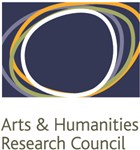The notion 'possible word' and its limits: A typology of suppletion
Project Overview
Project
The notion 'possible word' and its limits: A typology of suppletion
Project members:
Prof Greville G. Corbett
Dr Dunstan Brown
Dr Andrew Hippisley
Dr Marina Chumakina
Period of award
November 2000 - December 2003
Funder:
Arts and Humanities Research Council (AHRC) - B/RG/AN4375/APN10619
While linguists have investigated the notions ‘possible human language’ and ‘possible sentence’, less has been done to establish the bounds of possibility for the word. As part of continuing research into inflectional morphology, we explored one of these boundaries, where different inflectional forms are not related phonologically. An example is Russian celovek ‘person’, which has the plural ljud-i, a typical instance of suppletion. Suppletion is found in many inflecting languages and involves extremely frequent words. As Carstairs-McCarthy shows, the phenomenon “increasingly ... is coming to be seen as a clue to the way in which the inflected forms of a word are related to each other paradigmatically ... and are stored in the memory” (1994: 4410). As yet, little is known about the range of patterns of suppletion which are attested in the world’s languages, about the universal constraints governing their occurrence, or their co-occurrence with other phenomena.
Following the methodology of other successful projects, we investigated suppletion in two ways. First, we undertook a detailed analysis of a language which offers both several interesting examples of suppletion and readily available resources in electronic form, namely Russian. This language also provides useful insights into how suppletion arises and is lost. As the complementary part of the project, we examined a range of genetically diverse languages, created a database, and then used it to construct a typologically informed theory of suppletion. The results of this project are relevant to linguists working in various frameworks, and in the light of the quotation above, potentially of interest to psycholinguists too.


